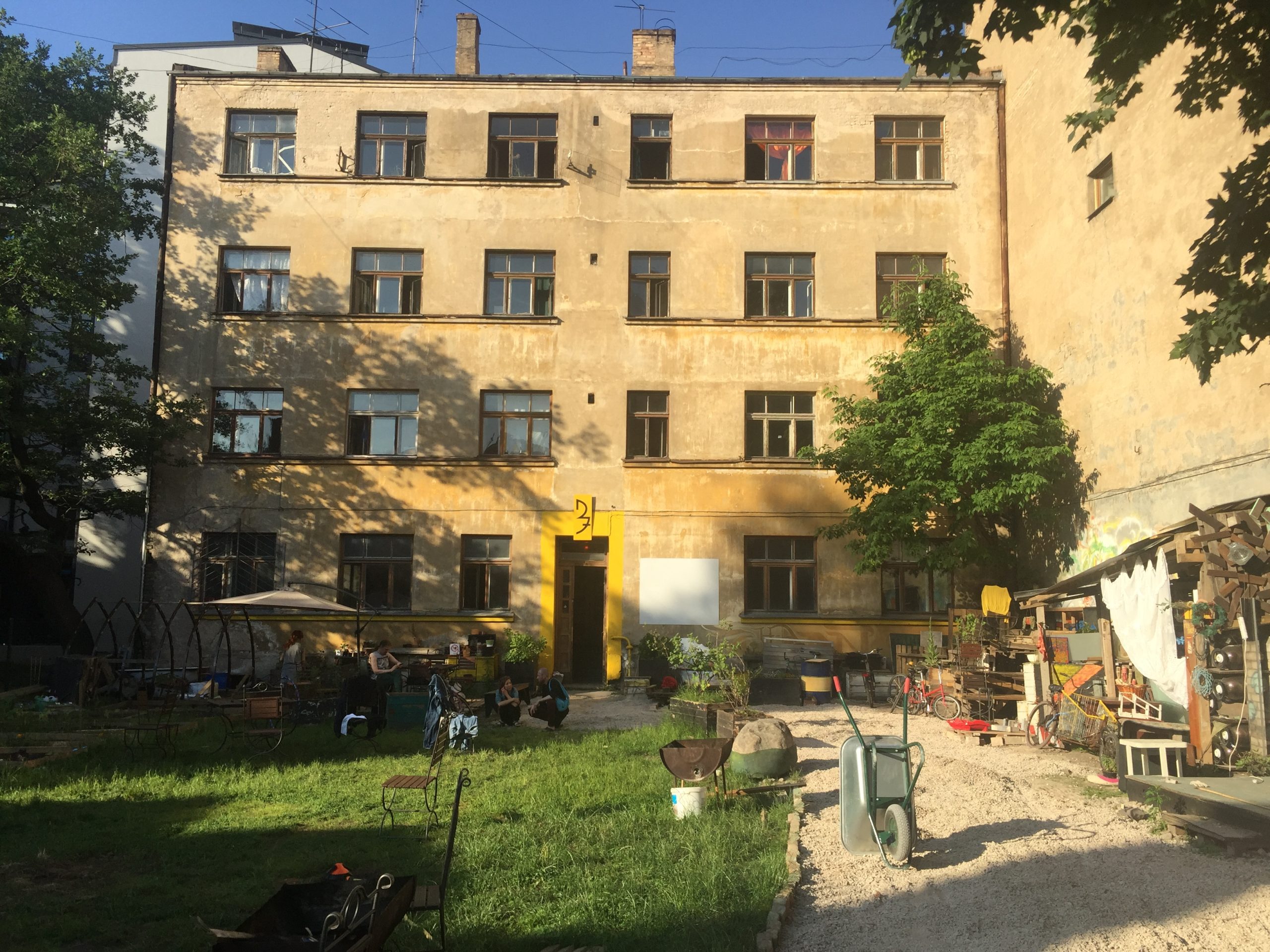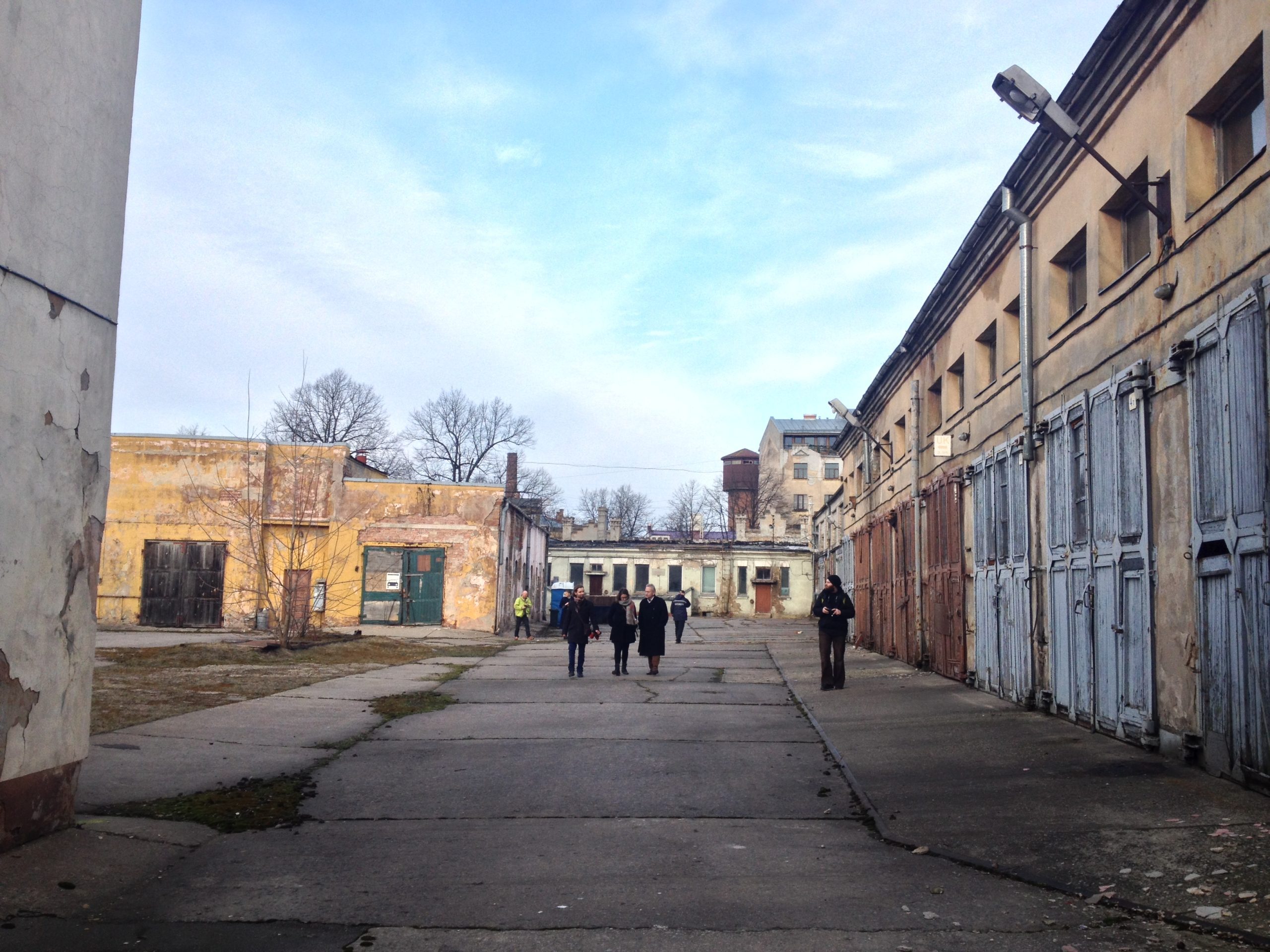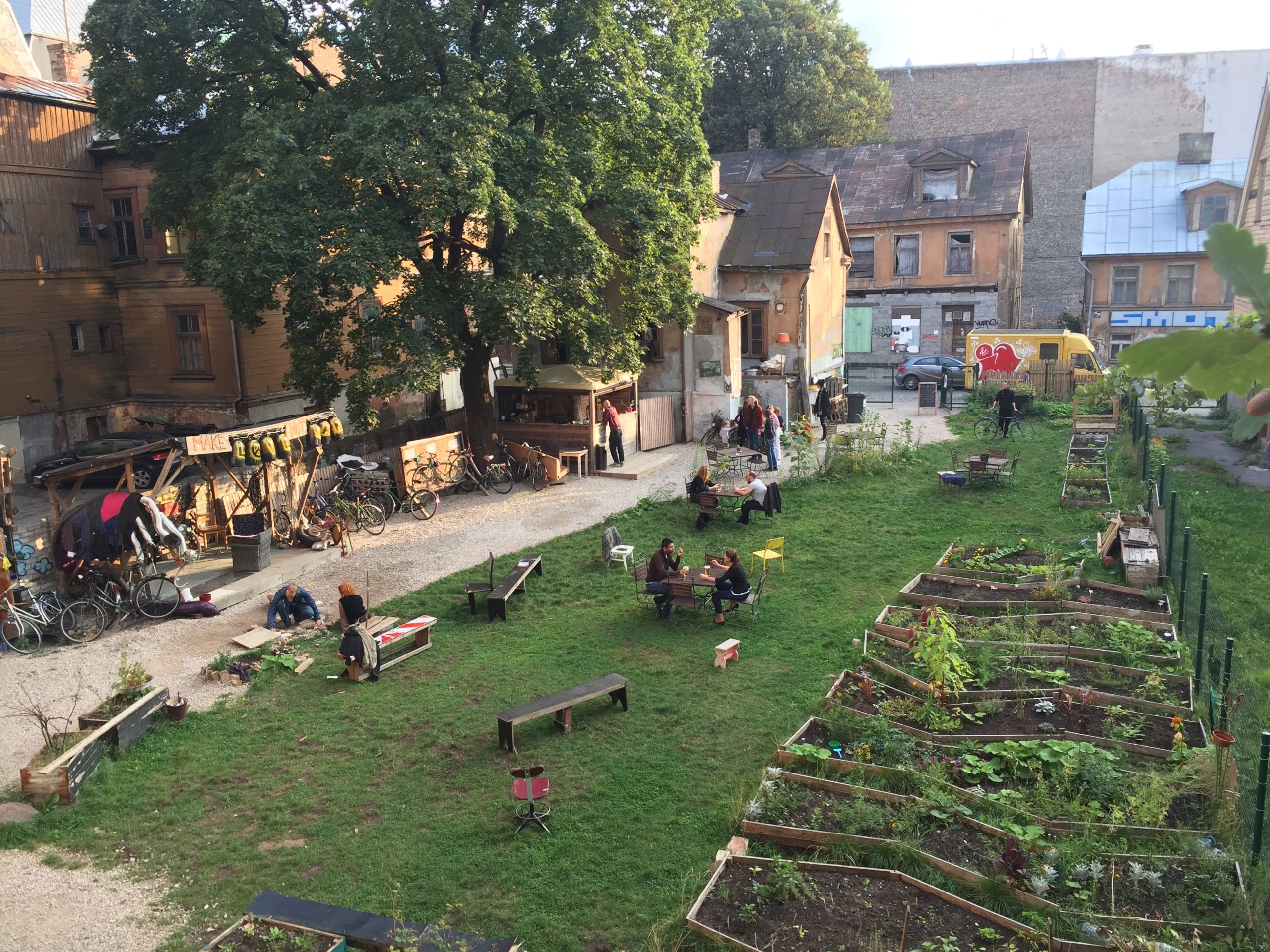Free Riga is an organisation promoting the temporary use of vacant and underused buildings across the city of Riga. Founded in 2013, Free Riga gained exposure through a highly successful campaign to make visible the hundreds of empty buildings that suffered from decades of neglect. Since then, the organisation operates as a platform to help the owners of vacant properties by opening their buildings to potential users, thus bringing cultural life in different parts of Riga.
Riga has the spirit of a Baltic metropolis. At the turn of the 19th and 20th centuries, the city witnessed the construction of a plethora of Art Nouveau, eclectic and wooden buildings (some of them still well preserved) and industrial architecture pearls side by side in the city centre. However, since the fall of Soviet Union and reinstitution of democracy, Riga has been a shrinking city. Between 1990 and 2020, the city lost nearly 30% of its population due to urban sprawl and emigration, now counting around 700,000 inhabitants within the city borders and 1,15 million in the agglomeration.
Shortly before 2008, Riga was economically the fastest growing capital of the European Union with a booming property market. Ever-optimistic large-scale development plans were envisaged for the many old industrial, harbour and inner city areas in an economy that was still undergoing a structural transformation from Soviet planned to free market economy. Much of this growth was fuelled by real estate speculation and easy access to credit. Hundreds of often shabby-looking buildings were sold for ever increasing prices, and were waiting for their reconstruction. The crisis of 2008 halted much of the credits and made many development projects unviable. Subsequently, many hundreds of buildings with their outdated development visions had been left empty, without heating and not properly looked after.
Free Riga first emerged in 2013 as an artistic initiative emerging from this outfall. Some cultural organisations had started successful ad-hoc temporary use projects already in 2005, however, these successes had been local and not implementing temporary use by intention and with awareness of how to operate this model. The paradox of many initiatives looking for space in parallel with the presence of a visibly growing number of vacant buildings was making the cultural sector more and more frustrated, especially as Riga was preparing to become European Capital of Culture in 2014. “How is it possible that nearly every 5th building in the city centre is vacant or abandoned, and yet there is no space for the many cultural, arts and social initiatives?” – this was the questions formulated by 10-12 well-known arts, culture and city organisers who had dealt with vacancy – among them the Latvian Centre for Contemporary Arts, arts centre “Totaldobže”, Kaņepes Culture centre, coworking space “DarbaVieta” and other activists. That was the birth moment of Free Riga.

The founding action of Free Riga as a movement was to print 5000 yellow “OCCUPY ME” stickers as part of the annual contemporary arts festival “SURVIVAL KIT”, which often utilizes abandoned properties, and launched a campaign inviting people to stick them on all the vacant properties in Riga, to give visibility to the phenomenon of vacancy. As this campaign gained unexpected visibility and resonance, initiators of this action started organising follow-up activities under the name Free Riga as an ever-growing but loose network of cultural actors and activists. An online map and database of vacant properties in Riga was produced, as well as an application form to survey initiatives that would be interested in working in the empty buildings with following workshops, expeditions and other activities.
The first spontaneously organised activities were crystallised by the discovery of the “temporary use” model. At the turn of 2013 and 2014 the initiators of Free Riga found out about the NGO “HausHalten” and their “Guardian Houses” initiative in Leipzig. This NGO was formed by architects in the early 2000s when Leipzig was facing a huge property market crisis and depopulation, not unlike Riga. This discovery introduced the group behind Free Riga to the concept of temporary use as a viable service for private property owners. According to this model, the owner benefits from the preservation and revitalisation of the building, while cultural workers or activists gain access to space for their creative activities, offering the maintenance of the building as a payment. Inspired by this example, the first three temporary use projects in Riga were set up in 2014-2015.
Free Riga has adapted the model of “temporary use”, which has emerged in the 1980s, based on the work of a few generations of organisations in Europe, as well as in the USA. Temporary use projects brokered a type of limited-time or “till-further-notice” agreements that entail less user rights and in comparison with more rigid rent agreement are more appropriate for often short or even undefined time spans. Temporary use agreements thus are more attractive for the owners and allow easier access to properties “in transition” that have lost their use and are waiting for new development, sale or renovation. From the users’ perspective, temporary use spaces offer considerably lower costs even for properties in central locations and access to often interesting and atypical properties. Therefore temporary use is mostly attractive as residential, event or workshop space for artists, culture and start-up initiatives that are willing to tolerate the relative lack of rent protection to have cheaper and more exciting spaces with a community of like-minded people as an additional benefit.

In the recent decade, benefiting from experiences of front-runner cities like Amsterdam, Berlin and others, temporary use has gained recognition within city councils and even at the level of the European Commission as an instrument for municipalities that are seeking to strengthen the social economy. Temporary use allows to put to use the “creative surpluses” of cultural and social initiatives that cannot afford commercial spaces, especially in context of rising rents and gentrification. At the same time, they boost self-employment, support new citizen-led social services and neighbourhood initiatives that respond to the needs of citizens faster than most municipalities can plan for them. Finally, temporary use helps optimising urban planning by allowing for a phase of testing and participatory planning.
Another boost to the development of Free Riga was a newly established cooperation with the Municipality of Riga and the discovery of the fact that municipal law offers 90% property tax reduction for owners who lease their vacant property to NGOs with a public benefit status. This helped to formulate a clear value proposition to the owners: open your vacant property for public benefit activities and get a property tax reduction, as well as maintenance and a light renovation of the building (that helps avoiding additional property taxes charged to derelict buildings). As fixing the property takes time and effort and is a precondition for the property to be used and to gain tax reductions, Free Riga now calculates and asks owners for some minimum contract duration to assure that the investment is worthwhile.
Free Riga now
Free Riga is now an NGO with public benefit status opening vacant and abandoned buildings for creative and social temporary use in Riga. Free Riga operates as a social temporary use platform based on a social business model. Firstly, Free Riga offers vacant property management services to private owners and uses empty buildings for a limited time period in exchange for the services of looking after and maintaining the building and bringing cultural life to its surroundings. Secondly, it curates and supports a mix of cultural and social initiatives and residents in these spaces that pay an affordable membership fee to co-finance administrative and coordination costs of the space and the organisation, as well as participate in reanimating the location with their time and effort. In some locations we also invite commercial or semi-commercial activities that bring in extra revenue to support social activities, as well as contribute to the city-making aspect of the location (like bars, street-food, co-working spaces, etc). Free Riga was founded and is run by culture organisers and its mission is to support creators of the new urban culture in self-realisation and city-making.

In the past years, after being invited to re-animate larger vacant spaces and developing creative quarters, Free Riga has started to look for ways to extend the community-oriented, co-creative and self-generative qualities of the spaces beyond the typical temporary use period; in order to tackle the negative effects of gentrification and neo-liberal city planning policies in general. One approach is to refine our role as co-developers and curators of user investment into repurposing abandoned spaces and thus becoming longer term partners for the owners of vacant properties. Another approach is to access ethical financing to acquire these properties. As these aspirations and challenges are similar to an entire generation of similar organisations, in 2019 Free Riga became one of the founding members of STUN – Social Temporary Use Network. STUN unites European social temporary use platform organizations and multiple other participants for annual gatherings to help partners in building and launching new spaces. These meetings also serve to help participants exchange their practices and formulate common goals and strategies.
As of the beginning of 2020, before the Covid-19 outbreak, Free Riga was running social temporary use projects in four locations of Riga, totalling 8,500m2 in 23 buildings, as well as 2ha in outdoor space. Starting as a movement in 2013 and transitioning to a NGO in 2015, Free Riga has already completed another three projects, becoming one of Riga’s main hubs for youth engagement and impact on their surroundings. Previously unused buildings with the energy of hundreds of residents of the Free Riga spaces have become hubs for the creation of community-based projects, hosting hundreds of concerts, exhibitions, performances, workshops, lectures, conferences, meetings, free shops, sharing and upcycling initiatives, parties and other activities. Currently Free Riga has five full-time and foiur part-time employees, 70 residents (individuals and collectives) totalling at least 500 individuals directly engaged in Free Riga spaces, reaching many thousands of citizens with their activities.
Written by Mārcis Rubenis, co-founder of Free Riga.
This article appears in the book The Power of Civic Ecosystems: How community spaces and their networks make our cities more cooperative, fair and resilient.

